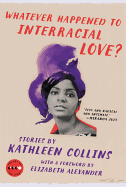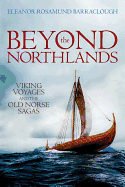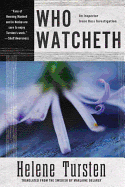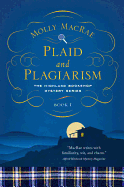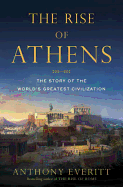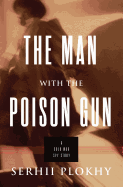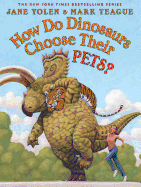Tuesday, December 27, 2016
5 March. Harold Nicolson, Diary, 9 November 1947 (after reading Pepys): "It is some relief to reflect that to be a good diarist one must have a little snouty sneaky mind." --Alan Bennett, "Diary," in the London Review of Books
Do you keep a journal or diary? The ending of one year and start of another seems to beg the question. I'm a lousy diarist myself. Always have been, and the damning evidence is lined up neatly on a shelf in my library, where unfilled leather-bound journals and Moleskin notebooks stand as witnesses for the prosecution.
As a reader, however, I have long been intrigued by the daily chronicles of other writers and artists. In an interview, May Sarton once said "people don't read the journals to discover me; they read the journals to discover themselves." That sounds right. Sarton's works--particularly Journal of a Solitude and The House by the Sea--have been part of my life for decades. Other longtime companions include the journals of Ralph Waldo Emerson and Thomas Merton as well as the travel writings of 17th-century Japanese poet Matsuo Bashō.
 I'm always on the hunt for new opportunities to insert myself in the lives of others. My current TBR wish list includes War Diaries, 1939-1945 by Astrid Lindgren, translated by Sarah Death; A Celtic Temperament: Robertson Davies as Diarist, edited by Jennifer Surridge & Ramsay Derry; The Folded Clock: A Diary by Heidi Julavits; and Ian Brown's Sixty: A Diary of My Sixty-First Year.
I'm always on the hunt for new opportunities to insert myself in the lives of others. My current TBR wish list includes War Diaries, 1939-1945 by Astrid Lindgren, translated by Sarah Death; A Celtic Temperament: Robertson Davies as Diarist, edited by Jennifer Surridge & Ramsay Derry; The Folded Clock: A Diary by Heidi Julavits; and Ian Brown's Sixty: A Diary of My Sixty-First Year.
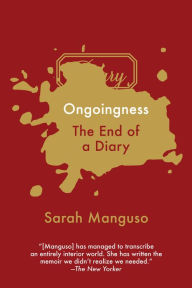 One of my favorite recent reads is a brilliant contemplation on the impossible dream of keeping a journal. In Sarah Manguso's Ongoingness: The End of a Diary, she confronts the beast itself: "I started keeping a diary twenty-five years ago. It's eight hundred thousand words long.... The trouble was that I failed to record so much."
One of my favorite recent reads is a brilliant contemplation on the impossible dream of keeping a journal. In Sarah Manguso's Ongoingness: The End of a Diary, she confronts the beast itself: "I started keeping a diary twenty-five years ago. It's eight hundred thousand words long.... The trouble was that I failed to record so much."
As a writer, journal-keeping was a losing contest with the blank page. Fortunately for the reader in me, it has been a rewarding spectator sport.
Whatever Happened to Interracial Love?: Stories
by Kathleen Collins
Kathleen Collins was a writer, civil rights activist, filmmaker and film professor who died at age 46 in 1988. Her critically admired feature film, Losing Ground, was restored and given its first theatrical release in 2015. Whatever Happened to Interracial Love? is the first publication of her short fiction.
This collection is filled with nostalgia for lost moments of happiness and belonging--in a romance, in an extraordinary group of young friends or a seemingly perfect family. Collins understands the delicate intricacies of a failing relationship, and has a special interest in the unresolvable strangeness of life. In one story, a hairdresser accidentally and inexplicably tells a client's future; in another, an uncle "soaked his life in sorrow," keeping the household awake every night with "his great heartrending sobbing that went on hour after relentless hour until the morning, when he would fall asleep and sleep the day away only to awaken again at night and begin this vigorous lamentation."
In many of Collins's stories, conflicts involving race and gender play out in the lives of intellectual and idiosyncratic people living in Manhattan, Paris and rural New England during the early 1960s, when the civil rights movement was roaring. She vividly evokes the exhilaration and apprehension of that time, and the struggle to lead a life in the midst of sexual and racial revolution. These stories fill a gap in the literature, whether or not you knew a gap was there, and they speak to the present like a sharp-eyed worldly aunt who has seen it all. --Sara Catterall
Discover: Young black bohemian intellectuals in the 1960s negotiate life in the midst of sexual and racial revolution.
The Ornatrix
by Kate Howard
Born with a birthmark the shape of a bird across her face, Flavia's life has been one of hiding and shame--first tucked away in her family home, then hidden behind a veil and, finally, sent to board as a servant in the convent of Santa Giuliana. There, she meets Ghostanza, a Venetian courtesan exiled by her family to live with the nuns. Obsessed with her appearance, Ghostanza spends her days scheming ways to collect the materials needed for her secret beauty treatments, including her closely guarded recipe for the perfect cerussa, a blended white lead used as a skin lightener.
"If a woman is not seen, she does not exist," she tells Flavia, who has been selected to serve as Ghostanza's ornatrix (a servant responsible for adornments and decorations). These words spark something inside Flavia, who becomes determined to find her own beauty and be seen--no matter the cost.
The antique recipes for beauty treatments slipped between the chapters of The Ornatrix are a testament to Kate Howard's skill in drawing on the truths of history to reflect on beauty and womanhood (and where the two intersect) in 16th-century Umbria and up through today. Howard's language is as layered as the paints Ghostanza spreads across her face each day, which can make the plotting of The Ornatrix feel slow and slippery at times. As a whole, however, and especially as it slinks forward to a surprising conclusion, Howard's debut proves to be a complicated, intricate story of beauty, obsession, revenge and what it means to be seen--and therefore to be known. --Kerry McHugh, blogger at Entomology of a Bookworm
Discover: Set in 16th-century Umbria, Kate Howard's debut novel explores the nature of beauty, obsession, revenge and more.
Mystery & Thriller
Who Watcheth
by Helene Tursten, transl. by Marlaine Delargy
A middle-aged woman is found dead in a cemetery, strangled and carefully taped up inside a plastic sheet. When the "Package Killer" strikes again, Detective Inspector Irene Huss and her colleagues on the Göteborg, Sweden, police force know they need to move quickly.
But as far as they can tell, there are no connections between the two victims except for their age. Is the Package Killer targeting middle-aged women, or striking at random? Could there be a sinister connection between the crimes and the vandalism that's been happening at Irene's home? When her chef husband and grown twin daughters start facing harassment, too, Irene's urgency to solve the case surges. But interdepartmental strife is causing problems among the officers. Can the Göteborg police force get its act together before more women die?
The ninth entry in the Irene Huss series, Who Watcheth is an engaging mystery with a very likable heroine. With a writing style reminiscent of Camilla Läckberg or Henning Mankell, Helene Tursten offers a detective with a nuanced and compelling personal life, as well as a dark and intriguing mystery.
For readers who haven't tried one of the many popular Scandinavian crime writers yet, Helene Tursten is a great introduction: Who Watcheth offers lots of suspense and a vivid Swedish setting, but not a lot of violence. Anyone who's ever struggled with office politics or worried about the safety of their kids is sure to relate to Detective Inspector Irene Huss. --Jessica Howard, blogger at Quirky Bookworm
Discover: In Göteborg, Sweden, middle-aged women are dying--is a serial killer at work?
The Gentleman from Japan
by James Church
Inspector O, formerly a police investigator in North Korea, is living with his nephew, Major Bing, in Yanji, China. Bing is chief of the Chinese Ministry of State Security operations on the border with North Korea, so he is called in when seven residents die on the same evening in four restaurants in the Yanji area.
The mayor is calling it terrorism, but Bing isn't so sure. He thinks it might be a message from one gangster to another. Inspector O has heard mafia rumors too, but then he is suddenly approached to undertake a secret task in Portugal, posing as a businessman from Japan. Obedient to the call of an old friend, O heads for Europe and is swept into a confusing mission that spreads from Portugal to Spain. Apparently, a Spanish company is manufacturing machines integral to the production of nuclear bombs and disguising them as dumpling makers. But are the dumpling machines headed for North Korea? China? The Japanese yakuza? The layers of intrigue are thick, and it will take O's efforts in Europe and Bing's assistance back home to get to the bottom of the mystery.
A rather elliptical entry in an interesting series, The Gentleman from Japan showcases James Church's intelligence background. O's poetic, introspective approach to high-level intrigue is sure to appeal to fans of Arnaldur Indridason or Donna Leon. Enigmatic but irresistible, The Gentleman from Japan is a fascinating international escapade for the impeccable Inspector O. --Jessica Howard, blogger at Quirky Bookworm
Discover: When a Spanish company is selling nuclear parts, can Inspector O of North Korea figure out where they're headed?
The Knife Slipped
by Erle Stanley Gardner, writing as A.A. Fair
Hard Case Crime has once again unearthed another lost vintage mystery treasure--and it's a doozy! By 1939, wildly prolific mystery novelist Erle Stanley Gardner had published 15 Perry Mason novels in seven years. He started a new series under the pseudonym A.A. Fair, featuring the quarreling and sardonic detective team of Bertha Cool (immense, penny-pinching and foul-mouthed) and Donald Lam (smaller, brainy and prone to getting beat up). Gardner's publisher thought his proposed second book in the series, The Knife Slipped, was too shocking for the times and turned it down. Seventy-seven years later, it's finally in print--and it's worth the wait.
Fans of Gardner's straightforward and terse Perry Mason mysteries are in for a surprise and treat with the abundance of breezy and sarcastic humor found in The Knife Slipped. Like his Mason novels, The Knife Slipped is both fast moving and intricately plotted, but Lam's first-person narration allows much more freedom for Chandleresque descriptions and smart remarks. "I like loose clothes, loose company, and loose talk, and to hell with people who don't," declares Cool. The duo is hired to trail a philandering husband, but immediately after they discover he's leading a double life, he's murdered. With a crime scene crowded with suspects, including trigger-happy mobsters and shifty cops, it's up to the duo from the B. Cool Detective Agency to figure out whodunit.
This vintage hardboiled mystery has plenty of sass and energy, with intricate plotting and a delightful parade of suspects. The Knife Slipped is a treat that no mystery fan will want to miss. --Kevin Howell, independent reviewer and marketing consultant
Discover: Finally in print after 77 years, this fast-paced, tart-tongued mystery features detectives Cool and Lam.
Plaid and Plagiarism
by Molly MacRae
After a bitter divorce, Midwesterner Janet Marsh is thrilled to start a new chapter in a small Scottish town: running a bookshop and tearoom with her daughter Tallie, best friend Christine and Tallie's friend Summer. But as the four women assume ownership of Yon Bonnie Books, they encounter trouble: vandalism at Janet's house, unexplained resentment from a few locals and a nosy newspaper columnist who meets a bad end. Molly MacRae, author of the Haunted Yarn Shop mysteries, begins a charming new series with Plaid and Plagiarism.
Janet and her compatriots are delighted to be in Inversgail, but not sure the former owners are ready to relinquish control of the shop. Meanwhile, Janet is eager to move into her house, but when the property is vandalized, it becomes a crime scene. The prime suspect is journalist Una Graham, who loves to stir up trouble and then write about it. But then Summer finds Una's body in Janet's garden shed--and the women find a series of letters detailing her personal grudges against several people, any one of whom could be the killer.
Determined to unravel the mystery so they can run the bookshop in peace, the four women split up sleuthing duties while adjusting to life in Inversgail. With their combined investigative skills and plenty of pear ginger scones from the local bakery, the women triumph in both their new business venture and their first foray into detective work. --Katie Noah Gibson, blogger at Cakes, Tea and Dreams
Discover: This charming mystery set in the Scottish Highlands combines murder, poison-pen letters and the challenges of running a bookshop.
History
Beyond the Northlands: Viking Voyages and the Old Norse Sagas
by Eleanor Rosamund Barraclough
Medieval historian Eleanor Rosamund Barraclough traveled extensively while compiling Beyond the Northlands: Viking Voyages and the Old Norse Sagas, and it's evident in the way her evocative prose plunges into the mythologies of ancient landscapes and bygone cultures.
On the Norwegian coast, dusk "melts into night" as the wind moans. In Greenland, Arctic foxes leave "insubstantial, wispy tracks." In setting such bleak and haunting scenes, Barraclough produces an intoxicating fusion of travelogue, history and saga. Beyond the Northlands is neatly divided into four thematic sections that follow medieval Norse migrations north, west, east and south. What emerges is a surprisingly complex portrait of Viking culture.
To be sure, Barraclough pays plenty of attention to notorious Viking bawdiness and barbarity, relishing the brutal details of kingdom sieges and battles and pillaging. But belying this stereotype is Barraclough's careful uncovering of Norse culture and influence in places not typically associated with Vikings, including the steppe country of Russia and the hot, dry and comparatively exotic Middle East. Delineating the intersection of southern Christendom and northern paganism, she adeptly reveals a warrior mythic culture with deeply human traits, a culture slowly integrating into larger societies.
Beyond the Northlands beautifully explores those "liminal" spaces where "identities, loyalties, and even realities are all mutable." In the wild vicissitudes of Viking folklore, Barraclough locates the universal human need to tell stories as a way to bridge gaps in knowledge. Bridging many gaps, Beyond the Northlands is a magnificent contribution to the understanding of a fierce and poetic people. --Scott Neuffer, freelance journalist and fiction author
Discover: A medieval historian and world traveler adds to our understanding of the rich and wondrous culture of the Vikings and its far-flung influence.
The Rise of Athens: The Story of the World's Greatest Civilization
by Anthony Everitt
Anthony Everitt, well-regarded chronicler of classical Rome (Cicero, Augustus, The Rise of Rome), turns his attention to ancient Greece and its far-reaching influence in The Rise of Athens: The Story of the World's Greatest Civilization. While it doesn't cover new ground, The Rise of Athens provides a comprehensive and entertaining account of one of the most transformative societies in Western history.
Everitt recounts the high points of Greek history with flair and aplomb. The battle of Thermopylae, the rise of Pericles, the creation of Greek drama and the birth of democracy read like the high drama that they are. But Everitt excels equally when detailing lesser-known moments--such as Xerxes punishing the Hellespont by giving it 300 lashes and ordering that a "pair of shackles be dropped into the sea," or detailing the origin of our words laconic and ostracism (we have the Spartans to thank for the former and the Athenians for the latter.)
The Rise of Athens moves with ease between the large-scale, epic historical narrative and the more intimate, personal details of Athenian daily life. Whether recounting the recondite protocols of an older man's relationship with a young boy (the erastes and eromenos), or the living conditions of a hoplite, or the anxieties of the average Athenian citizen navigating the newly fledged democracy, Everitt makes present and urgent that which happened 2,500 years ago. His compelling writing reminds readers what they probably knew but perhaps forgot: that the legacy of classical Athens pervades nearly every aspect of modern Western society. --David Martin, freelance writer
Discover: The Rise of Athens is an accessible and engaging history of the critical moments in ancient Greek civilization.
The Man with the Poison Gun: A Cold War Spy Story
by Serhii Plokhy
The Cold War era was marked by paranoia, propaganda and the simmering threat of nuclear war. Tensions between the West (the United States and NATO allies) and the East (the Soviet Union and its satellite states) led to heightened espionage on both sides. Thus, in 1961, when top KGB assassin Bogdan Stashinsky defected to the West and began to spill the secrets of his trade, the intelligence community on both sides was thrown into turmoil. "I wanted to unburden my conscience and give... publicity to the way in which 'peaceful coexistence' really works in practice."
The Man with the Poison Gun: A Cold War Spy Story reveals Stashinsky's complex life. His family was part of the Ukrainian independence movement during and after World War II, and yet he began working as an undercover KGB agent in his early 20s. He showed distinct aptitude, and in 1959 was ordered to assassinate Stepan Bandera, charismatic leader of the Ukrainian resistance. Stashinsky successfully carried this out using a makeshift spray gun that fired poison gas, but he never held strong political passions and shortly thereafter became disenchanted with his secret life.
Serhii Plokhy, professor of Ukrainian history at Harvard University, has earned numerous awards, including the 2015 Lionel Gelber prize for The Last Empire. His solid reporting and intelligent analysis illuminates this tangled web of intrigue. He lays out historical events and complex twists and turns with clarity. Those who enjoyed Ben Macintyre's A Spy Among Friends will find this a fascinating history. --Cindy Pauldine, bookseller, the river's end bookstore
Discover: This book about a KGB assassin who defected to the West in 1961 is a Cold War tale of spycraft, poison gas, deadly powders, false identities and more.
Political Science
The Chibok Girls: The Boko Haram Kidnappings and Islamist Militancy in Nigeria
by Helon Habila
The missing girls of Chibok have become poster children for how terrorism destroys families and futures. Stolen by Boko Haram militants in 2014, most of the 276 girls kidnapped at school have never been seen again. Their cause was taken up across the world, the hashtag #bringbackourgirls used by Michelle Obama, among others. In The Chibok Girls, Helon Habila, a Nigerian writer now living in the United States, tells their story, traveling to his homeland to see where they were abducted and turning a critical eye toward the failed social structures that led to their disappearance.
Habila is a novelist and poet, and demonstrates his literary skills here in portraying Chibok before and after its girls were taken. Recounting his journey to the town and throughout Nigeria, Habila depicts the crippling graft that affects all levels of government in one of the more prosperous African countries. Complicating it are the roles of religion and race, which stoke sectarian violence and give rise to groups like Boko Haram.
The Chibok Girls is short, written as a lonely meditation as the author meets and speaks with Chibok's townsfolk and the few girls who managed to escape their captors. But the story at its core is Habila's, showing a man removed from his mother country, now returned to see the source of an international horror. --Noah Cruickshank, adult engagement manager, the Field Museum of Natural History Chicago, Ill.
Discover: Helon Habila provides a harrowing account of the damage Boko Haram has done to Nigeria.
Children's & Young Adult
Love You Too
by Alastair Heim, illus. by Alisa Coburn
A father pig and his beloved piglette spend an exuberant day together in Love You Too, a heartwarming call-and-response picture book.
When I say "jammies,"
you say "please."
When I say "which book,"
you say "these."
When adult and child read this book out loud together at bedtime, it will sound like a giddy, loving duet. Each page features father and daughter pig engaged in some fun activity (like making many, many pancakes), and there's always a directive ("When I say 'pancakes,' you say 'more.' ") The charming, whimsical illustrations capture Dad flipping the pancakes up in the air, and his daughter catching them in stacks on plates. Speech bubbles show Dad saying, "Pancakes!" and his daughter answering "More!" And then it's repeated to complete a jaunty, song-like rhyme. "When I say 'syrup,' you say 'pour.' " "Syrup?" "Pour." "Syrup?" "Pour!" This pattern continues as they ride bikes together, cavort on a tire swing, crunch watermelon at lunch and play hide-and-seek. Finally, the day winds down with bedtime and hugs: "When I say 'night-y,' you say 'night.' " It's easy to imagine this book's joyful and affectionate call-and-response game echoing for decades and decades. "When I say, 'this one,' you say 'yes.' " --Karin Snelson, children's & YA editor, Shelf Awareness
Discover: A father and daughter pig spend a most excellent day together in this ebullient call-and-response picture book.
How Do Dinosaurs Choose Their Pets?
by Jane Yolen, illus. by Mark Teague
Face it: kids want pets, and some will go to great measures to acquire them. But the "kids" in How Do Dinosaurs Choose Their Pets? are especially ambitious in their attempts to bring home the perfect snuggly companion. Readers familiar with Jane Yolen and Mark Teague's beloved How Do Dinosaurs... series will instantly recognize the pattern, starting with "How does a dinosaur pick out his pet?" and escalating to more absurd scenarios:
"Does she drag a huge elephant
back in a wagon
with both its long trunk
and its wee tail
a-dragging?"
The satisfying refrain--"No... a dinosaur doesn't"--serves as a transition between all the silly "Does he or she..." queries and the ultimately more reasonable approach:
"He goes to a shelter
or pet store
or farm
to find a small creature
who will do no harm."
The magic in the series (which includes How Do Dinosaurs Say Good Night? and How Do Dinosaurs Love Their Dogs?) is in the recognition it sparks in small children--in this case in those who might themselves have tried to drag home an unsuitable pet or two. There's no judgment lurking beneath Yolen's words; she gently brings readers along as if they knew all the while that one does not bring home a tiger from the zoo or keep a shark in a pail.
Elaborately detailed and comical illustrations of dinos like the Ampelosaurus, Coahuilaceratops and Rhinorex romp through the pages, clutching boa constrictors and kangaroos with equal zeal. Of course, once they learn the proper way to select a pet, these same dinosaurs are excited but gentle with their new cats, dogs and bunnies. --Emilie Coulter, freelance writer and editor
Discover: Rambunctious dinosaurs go to great lengths to bring home manatees, zebras and tigers as pets in this entertaining addition to the popular How Do Dinosaurs... series.
| Advertisement Meet belle bear! |


